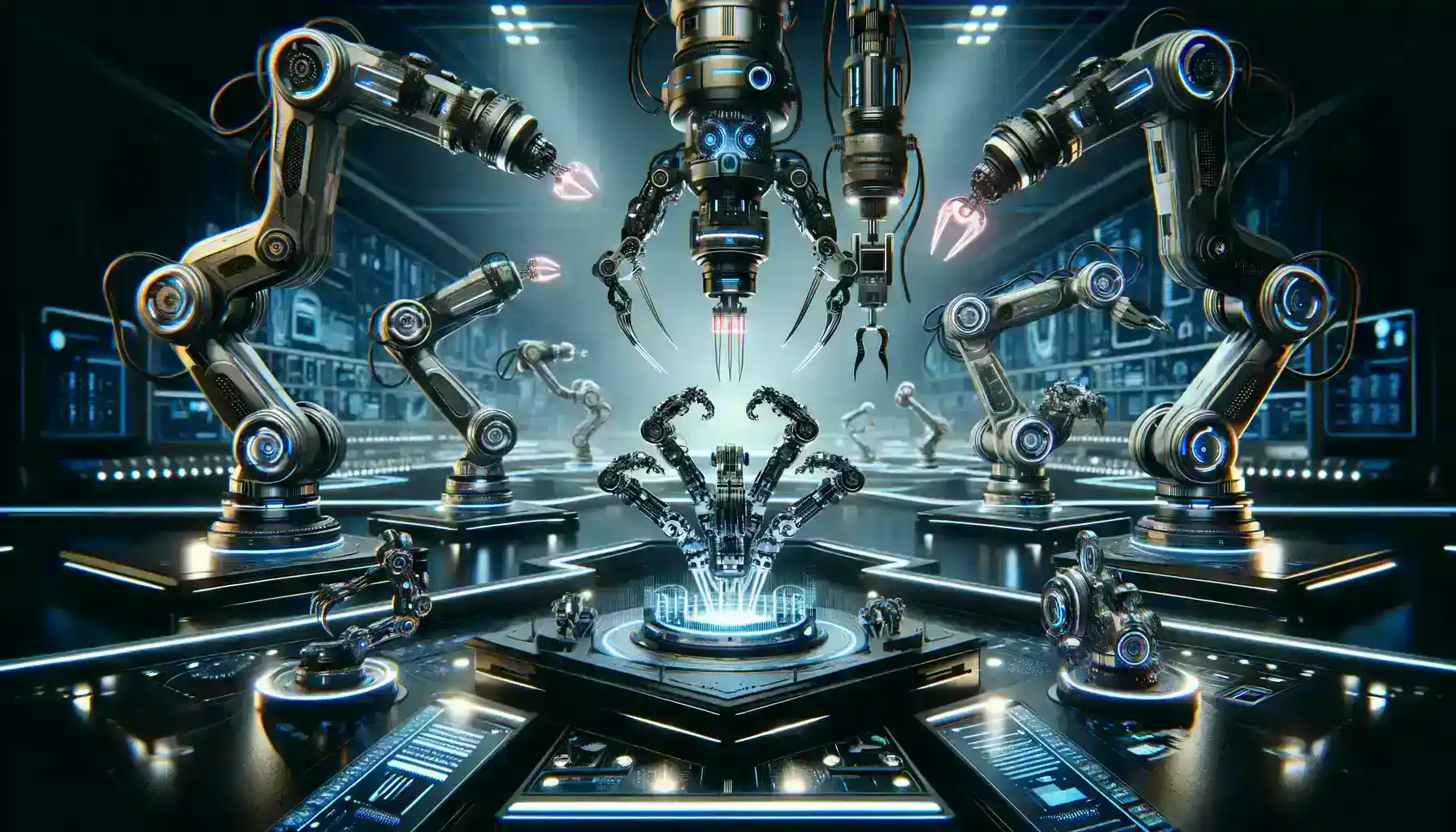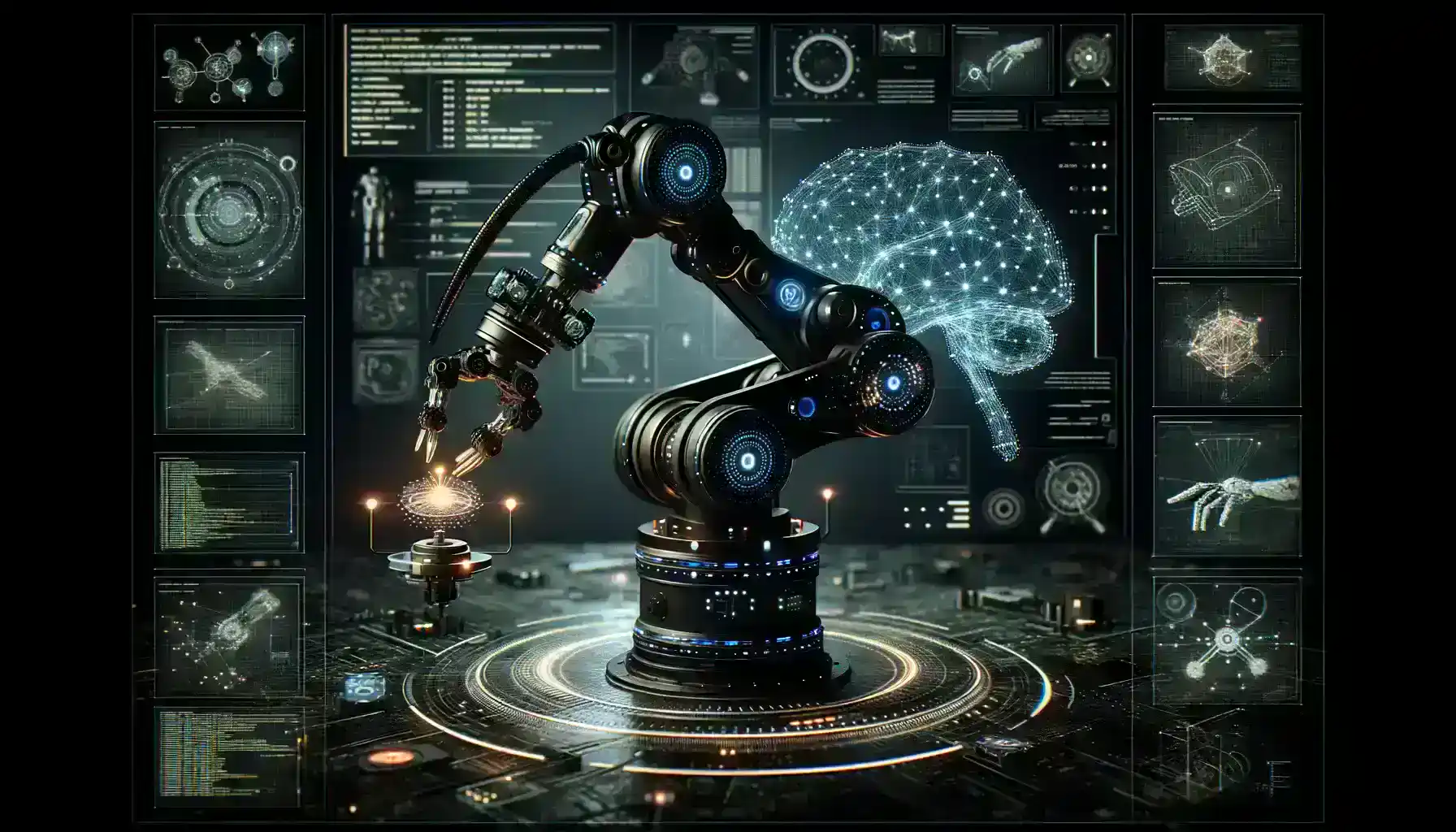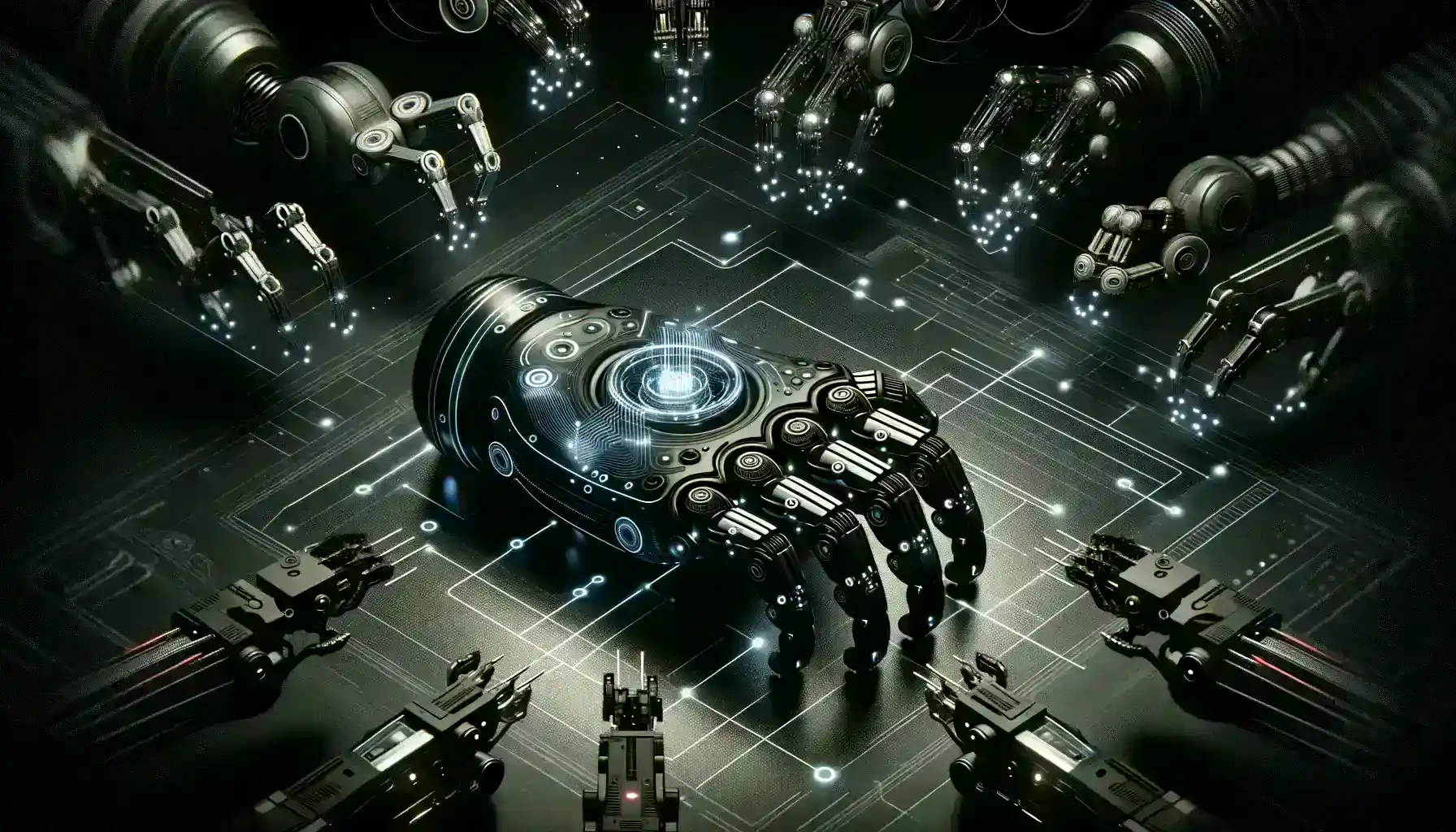Table of Contents
In the dynamic world of robotics, one area that has seen remarkable advancements is that of robotic grippers. These sophisticated tools are no longer just about mechanical strength and precision; they have evolved into intricate systems that combine mechanical engineering, artificial intelligence, and material science. This evolution is paving the way for robots to perform more complex and sensitive tasks, revolutionizing industries from manufacturing to healthcare.

At the recent Automatica exhibition, a notable highlight was the remarkable progress in robotic gripper technology, marking a significant leap in material handling capabilities. These advanced grippers have transformed the landscape of automation by becoming more intelligent, quicker, and remarkably sensitive, underscoring the critical role of electronic component distributors in supplying the necessary parts for such innovations.
This evolution is attributed to a series of innovative technological advancements. Despite their relatively new introduction into production environments, robotic grippers are rapidly proving to be essential tools. They are reshaping how tasks are approached in manufacturing and logistics, offering a blend of precision, efficiency, and versatility that was previously unattainable.
This shift towards smarter automation not only enhances productivity but also expands the range of applications where robots can be effectively employed, underscoring the growing indispensability of robotic grippers in modern industry.
Robotic Grippers Advancements
Traditional robotic grippers were primarily designed for strength and precision, limiting them to specific tasks. However, recent developments have led to more adaptable and sensitive grippers. These advanced grippers are capable of handling a variety of objects, from fragile glassware to irregularly shaped components, without the risk of damage. This versatility is achieved through the integration of soft robotics, which employs materials like silicone and polymers to mimic the flexibility and gentleness of a human hand.
One of the key advancements in this area is the development of grippers that can handle delicate and variably shaped objects. Unlike their predecessors, which were restricted to specific, often rigidly defined tasks, these modern grippers can adeptly manage items as fragile as glassware or as oddly shaped as automotive parts, all without causing any damage.
For instance, consider a robotic gripper in a factory setting designed to handle delicate electronic components. These components, often irregular in shape and fragile, require precise manipulation. Traditional grippers might either fail to grasp these items effectively or cause damage due to excessive force. In contrast, a soft robotic gripper, with its compliant structure, can gently yet securely handle these components, ensuring safety and efficiency in the production line.
Another example can be seen in the food industry, where handling varied items like fruits and vegetables – each with different shapes, sizes, and textures – is a challenge. Advanced grippers equipped with soft, adaptive fingers can pick and place these items without bruising or damaging them, which was not feasible with older gripper designs.
Convergence of Cutting-Edge Technologies

The intersection of various technologies is key to the evolution of robotic grippers. Machine learning algorithms and neural networks are now being used to enhance the decision-making capabilities of robotic grippers. These systems can learn from previous experiences, improving their grip and handling over time. The integration of sensors has also been a game-changer, allowing grippers to detect and adapt to the texture, size, and weight of objects.
Machine learning algorithms enable robotic grippers to analyze and learn from data collected during their operations. This continuous learning process allows the grippers to refine their gripping strategies over time, adapting to new tasks with greater efficiency. For instance, a robotic gripper in an assembly line can learn the best way to handle different components based on their shape, size, and material, reducing the risk of errors and increasing productivity.
Neural Networks
Neural networks are particularly significant in this advancement. They enable robotic grippers to process vast amounts of data from their sensors, leading to more intelligent and responsive actions. This aspect of artificial intelligence allows robots to make real-time adjustments for optimal handling, ensuring efficiency and reducing the likelihood of errors or damage.
Neural networks, a subset of machine learning, mimic the human brain’s structure and function, enabling robotic grippers to make complex decisions. These networks process vast amounts of sensory data, allowing grippers to make informed decisions about how to manipulate objects. For example, in a recycling facility, a gripper equipped with neural networks could distinguish between different types of materials, such as plastic, metal, or paper, and sort them accordingly, a task that requires a high level of precision and adaptability.
Hybrid Grippers: The Best of Both Worlds
The development of hybrid grippers combines the best features of both traditional rigid grippers and modern soft grippers. These hybrids can handle a wide range of tasks, from the delicate to the demanding, making them highly versatile. This adaptability is crucial in industries where robots need to deal with different materials and shapes within the same workflow.
For instance, in an automotive assembly line, a hybrid gripper could be used to install delicate electronic components as well as to handle sturdy engine parts. This versatility is invaluable in manufacturing processes that require handling a diverse range of components.
In the packaging industry, hybrid grippers can adapt to different products, from rigid, box-shaped items to soft, irregularly shaped goods. This adaptability enhances the efficiency of packaging lines, allowing for a seamless transition between different products without the need to change or adjust the gripper.
Another application of hybrid grippers can be found in the field of agriculture. Here, they can be used for tasks like picking fruits and vegetables, where a combination of a gentle touch and a firm grasp is required.
Innovations Shaping the Future

The future of robotic grippers lies in ongoing innovations. One area of focus is enhancing the tactile sensing of grippers, allowing them to not only grip objects but also to feel them, similar to human touch. Another area is the development of bio-inspired designs, where grippers mimic biological mechanisms for more effective and natural movements.
In the domain of tactile sensing, companies like SynTouch are making significant strides. SynTouch’s BioTac® sensors, for example, provide robots with a human-like sense of touch, enabling them to detect and analyze textures, temperatures, and forces. This advancement allows robotic grippers to perform tasks requiring a delicate touch, such as handling fragile items in quality control processes.
Another leader in this space is OnRobot, which has developed sophisticated gripping solutions that integrate tactile sensing. These grippers are designed to be highly sensitive and adaptable, capable of determining the best way to handle different materials, thereby enhancing precision in tasks ranging from assembly line work to intricate material handling.
Robotic grippers that draw inspiration from the animal kingdom are also emerging. A notable example is the Harvard Biodesign Lab’s soft robotic gripper that resembles an octopus tentacle. This design allows for wrapping around and securely gripping irregular and delicate objects, making it useful in diverse applications from underwater exploration to medical surgeries.
In terms of material handling and logistics, companies like RightHand Robotics are pushing boundaries with their RightPick system. This system combines machine learning, intelligent vision systems, and smart grippers that can handle an assortment of items, thereby revolutionizing warehouse automation.
Harnessing the Robot Grippers Potential with RoboDK
RoboDK, a leading software platform for robot programming and simulation, plays a significant role in harnessing the potential of these advanced grippers. By providing tools for simulation and programming, RoboDK enables engineers and developers to design, test, and optimize robotic grippers in virtual environments. This accelerates the development process and ensures that the grippers are well-integrated into the broader robotic systems.
One of the key strengths of RoboDK is its simulation environment. This feature allows for a detailed and accurate representation of real-world scenarios within a virtual space. Engineers can use this environment to design and test robotic grippers, experimenting with various configurations and operational parameters without the constraints and costs associated with physical prototyping. For example, in a virtual simulation, a developer can easily adjust the design of a gripper, test its performance in handling different objects, and assess its integration with other robotic systems. This flexibility speeds up the iterative process of design and testing, leading to more refined and effective robotic solutions.
Conclusion
The evolution of robotic grippers is a testament to the remarkable strides in robotics. As these grippers become more sophisticated, they open up new possibilities for automation and efficiency across various industries. The convergence of technologies, along with innovative platforms like RoboDK, is set to propel this field into an exciting future, where robots can perform tasks with a level of dexterity and sensitivity once thought to be exclusive to humans.
The future of robotic grippers is being actively sculpted by these ongoing innovations. Tactile sensing and bio-inspired designs are not just expanding the capabilities of robotic grippers but are also creating opportunities for their deployment in more nuanced and sophisticated tasks. As these technologies continue to evolve, we can expect robotic grippers to become even more versatile, sensitive, and integral to various industrial and research applications.